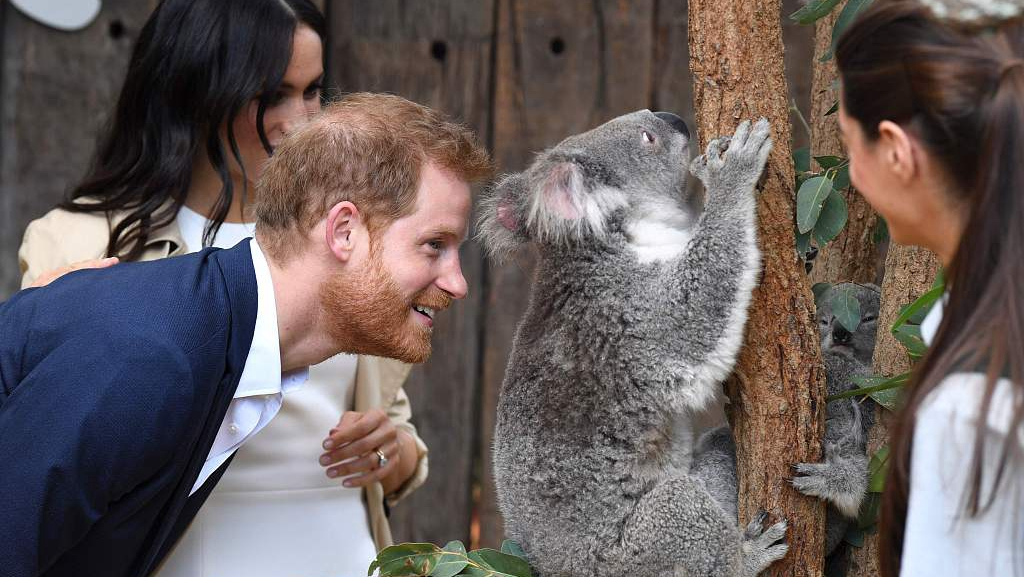

Prince Harry and his wife Meghan meet a koala named Ruby during a visit to Taronga Zoo in Sydney, October 16, 2018. /VCG Photo
Researchers have found a disease-free population of Australia's native animal, koala, raising hopes for the species revival.
Rapid urbanization and Chlamydia – a sexually transmitted bacterial infection – wiped out the animal's population in large parts of the country, forcing authorities to declare them functionally extinct.
Most of the wild populations of the koalas were found to be 100 percent infected, causing blindness and infertility among them. The infection was first discovered in koalas in northern Australia in the 1970s.
Efforts to administer antibiotics backfired as strong doses made it difficult for them to digest eucalyptus leaves, their staple diet.
A team of researchers from the University of Adelaide claimed to have identified "the last, large, isolated, healthy chlamydia-free population of koalas in Australia on Kangaroo Island." Their findings were published in the journal Nature Scientific Reports.
"This last Chlamydia-free population holds significant importance as insurance for the future of the species. We may need our Kangaroo Island koalas to re-populate other declining populations," said Jessica Fabijan, lead author of the study.
Veterinarians collected swab samples of 170 wild koalas residing at Kangaroo Island, which were tested negative for the infection, no symptoms of the disease were observed. The historical records also show no prevalence of the bacteria on the island.
On the contrary, nearly half of the samples collected from 75 koalas from the Mount Lofty Ranges, a mountain range on east of Adelaide, tested positive for the infection. But only three koalas showed sign of the disease.
"These koalas (at Kangaroo Island) could potentially be used as a disease-free breeding colony in the future," said Dr. Natasha Speight, koala researcher at the University of Adelaide's School of Animal and Veterinary Sciences.
Climate change and habitat loss due to massive urbanization in Australia have plummeted Koalas number to a low of 80,000, affecting their capacity to reproduce the next generation.
Their population has declined to the extent that the animal has started inbreeding, impacting their capability to reproduce healthy offspring, the Australian Koala Foundation (AKF) claimed.
The foundation monitors the koala's habitat in Australia's 128 federal electorates. Surveyors found no koalas in 41 electorates that were considered a vital range for the animal.

Copyright © 2018 CGTN. Beijing ICP prepared NO.16065310-3
Copyright © 2018 CGTN. Beijing ICP prepared NO.16065310-3